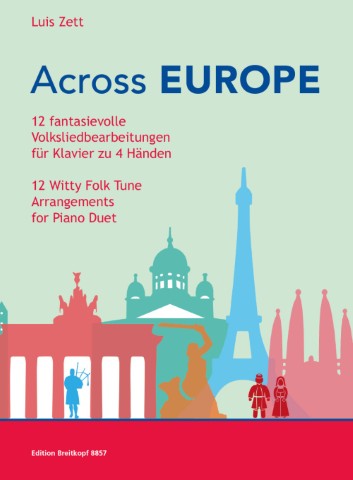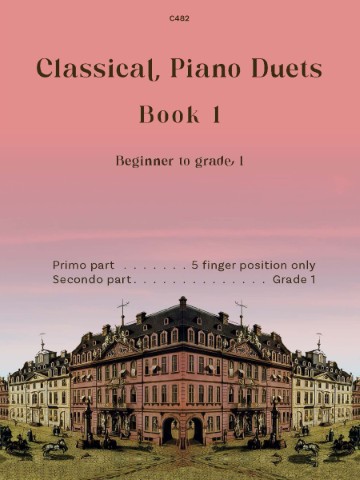Neue Liebeslieder Op. 65a
15 Waltzes

Composer: Brahms, Johannes
Editor: Mandyczewsk, Eusebius, rev. Draheim, Joachim
Instrumentation: Piano 4 Hands
Publisher:
| Product Code: | 979-0-004-81137-5 |
| ISMN: | 979-0-004-81137-5 |
| Publishers Number: | EB 6034D |
| Page count: | 33 |
| Condition: | New |
1. Verzicht, O Herz, auf Rettung
2. Finstere Schatten der Nacht
3. An jeder Hand die Finger
4. Ihr schwarzen Augen
5. Wahre, wahre deinen Sohn
6. Rosen steckt mir an die Mutter
7. Vom Gebirge Well auf Well
8. Weiche Graeser im Revier
9. Nagen am Herzen fuehl ich ein Gift mir
10. Ich kose suess mit der und der
11. Alles, alles in den Wind sagst du mir
12. Schwarzer Wald, dein Schatten ist so duester
13. Nein, Geliebter, setze dich mir so nahe nicht
14. Flammenauge, dunkles Haar
15. Zum Schluss (Nun, ihr Musen, genug)
Brahms’s music includes symphonies, concerti, chamber music, piano works, choral compositions, and over 200 songs. His style is deeply rooted in the structures and compositional techniques of the Classical masters, yet his music also embodies deeply Romantic motifs. While some contemporaries found his music to be overly academic, his craftsmanship was admired by later figures as diverse as Arnold Schoenberg and Edward Elgar.< His life began in a Lutheran family, and his father, Johann Jakob Brahms, was a musician who found work as a jobbing musician and a string and wind player in Hamburg. Johannes showed early promise as a pianist and first studied music with his father. At age seven, he was sent for piano lessons to F.W. Cossel, who three years later passed him to his own teacher, Eduard Marxsen. Between ages 14 and 16, Brahms helped support his family by playing in inns in the dock area of Hamburg, while also composing and sometimes giving recitals. In 1850, he met Eduard Reményi, a Jewish Hungarian violinist, with whom he gave concerts and from whom he learned something of Roma music—an influence that remained with him always. The turning point in his career came in 1853 when he met the violin virtuoso Joseph Joachim, who instantly recognized Brahms’s talent. Joachim introduced him to composer Robert Schumann, and this connection led to Brahms’s music being published and gaining recognition Brahms was a virtuoso pianist who premiered many of his own works. He worked with leading performers of his time, including the pianist Clara Schumann and the violinist Joseph Joachim, the latter being a close friend. His works have become staples of the modern concert repertoire, and his influence on music has been profound, with his detailed construction of works serving as a starting point and inspiration for a generation of composers.
In their piano version without vocal part, the Liebeslieder exert a particular fascination: for despite the fact that the poems are placed above the music, our…
Joachim Draheim based his revision of this new printing on the Brahms Complete Edition. An extensive preface provides information on the genesis of the work and the reception of the Neue Liebeslieder.
“Johannes brought me some enchanting waltzes on very pretty, predominantly folkloric texts. They are truly very charming (even without the voice) and I play them with great pleasure …” (Clara Schumann in her diary in 1869).
It is unfortunate that Clara Schumann did not note in her diary what she felt when playing this wonderfully athmospheric collection of Neue Liebeslieder …
Urtext edition based on the Brahms Complete Edition of the Gesellschaft der Musikfreunde in Vienna
R.R.P 16
Our Price: 14
Digital Download – PDF
Shipping costs: No shipping
Please create and forward a copy of this publication to the customer
You might also like
-
Across Europe
£22.00 -
Blue for Two
£7.61 -
Bumble Boogie
£11.00 -
Classical Piano Duets – Book 1
£7.61




